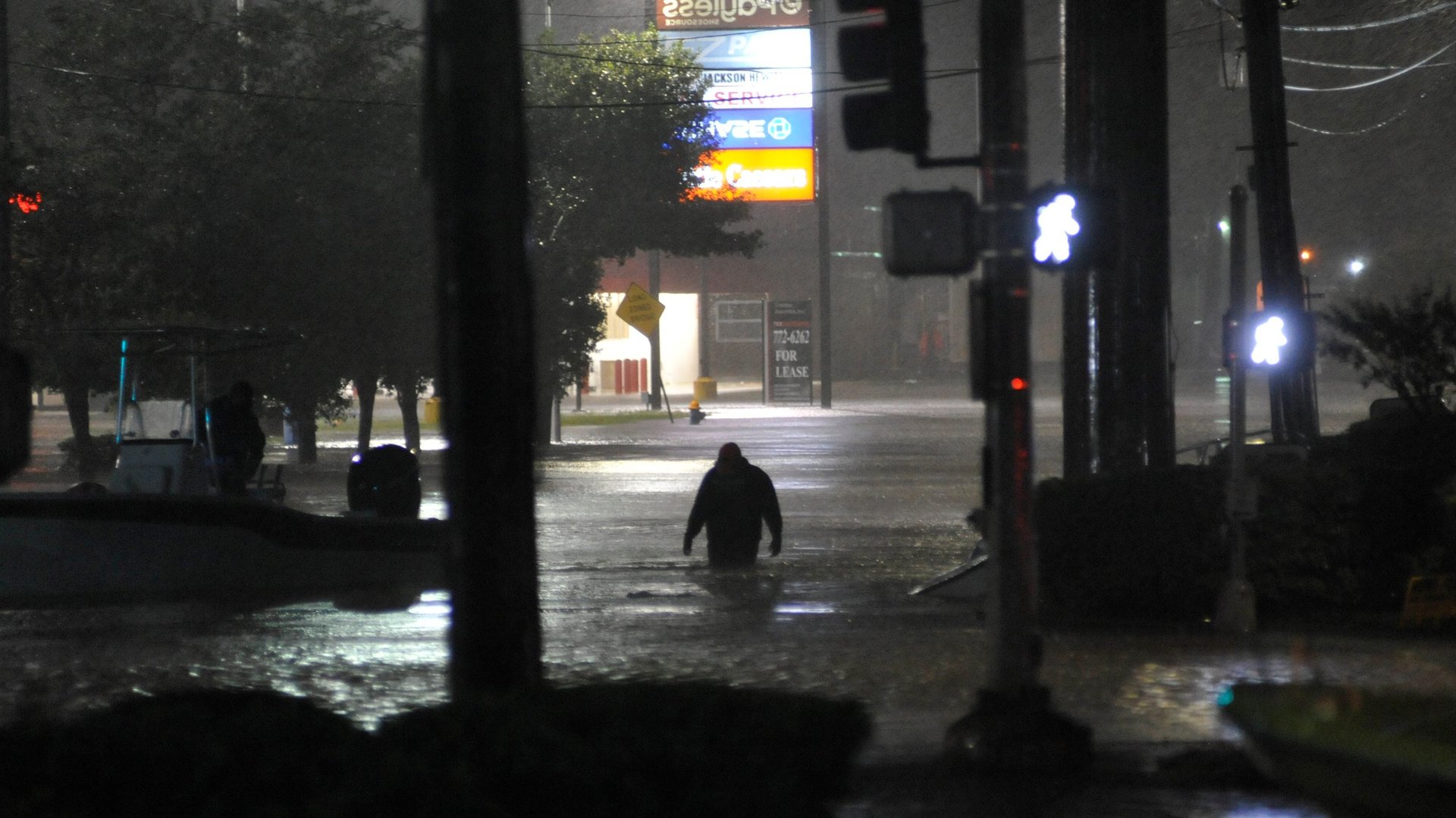US employment just fell for the first time in seven years after a brutal set of hurricanes
For the first time since the summer of 2010, the US economy did not add any jobs month-to-month—in fact, it lost 33,000 in September, according to the Bureau of Labor Statistics (BLS). Yet the unemployment rate fell to its lowest number since 2001 and wage growth—stubbornly stagnant for so long—notched up to an annual 2.9% from 2.5% in August, perhaps signifying a strengthening economy.


For the first time since the summer of 2010, the US economy did not add any jobs month-to-month—in fact, it lost 33,000 in September, according to the Bureau of Labor Statistics (BLS). Yet the unemployment rate fell to its lowest number since 2001 and wage growth—stubbornly stagnant for so long—notched up to an annual 2.9% from 2.5% in August, perhaps signifying a strengthening economy.
So what gives?
The dismal number today (Oct.6) from the BLS’ September jobs report can be attributed to the weather. Goldman Sachs estimates that the $100 billion in hurricane damage from Harvey and Irma affected 10% of the US population. One and a half million people did not show up to work because of the storms that hit the US. Jobs in food services and drinking places were especially hard hit, dropping sharply in September (-105,000), despite having added, on average, 24,000 jobs a month over the previous 12 months.
While Harvey made landfall in Texas on Aug. 25, prior to the September period for data collection, it caused severe damage in Texas and other areas off the Gulf Coast, which impacted this month’s report. Irma, which hit the US in mid-September, falls squarely in the survey period. (The BLS employment numbers don’t include Puerto Rico, so the job loss in the aftermath of Hurricane Maria isn’t reflected in the data.)
Hope still lives
Despite the dismal jobs number, Dallas Federal Reserve President Robert Kaplan is still open to hiking rates come December or early next year. While weak job growth doesn’t bode well for the Fed’s policy agenda, September’s rising wage growth and falling unemployment rate might mean the economy is still on a robust track.
“I’d rather look at three- to six- to nine-month trends. And I think a lot of these job losses, in our judgment, will be temporary,” said Kaplan on an interview on CNBC’ Squawk Box.
Others are not so sure. Elise Gould of the Economic Policy Institute thinks wage losses in low-paid, hard-hit sectors, like food services, may have temporarily pulled the overall wage average up: “It’s clear that we are still not at genuine full employment, and the Federal Reserve should keep interest rates low until we are.”